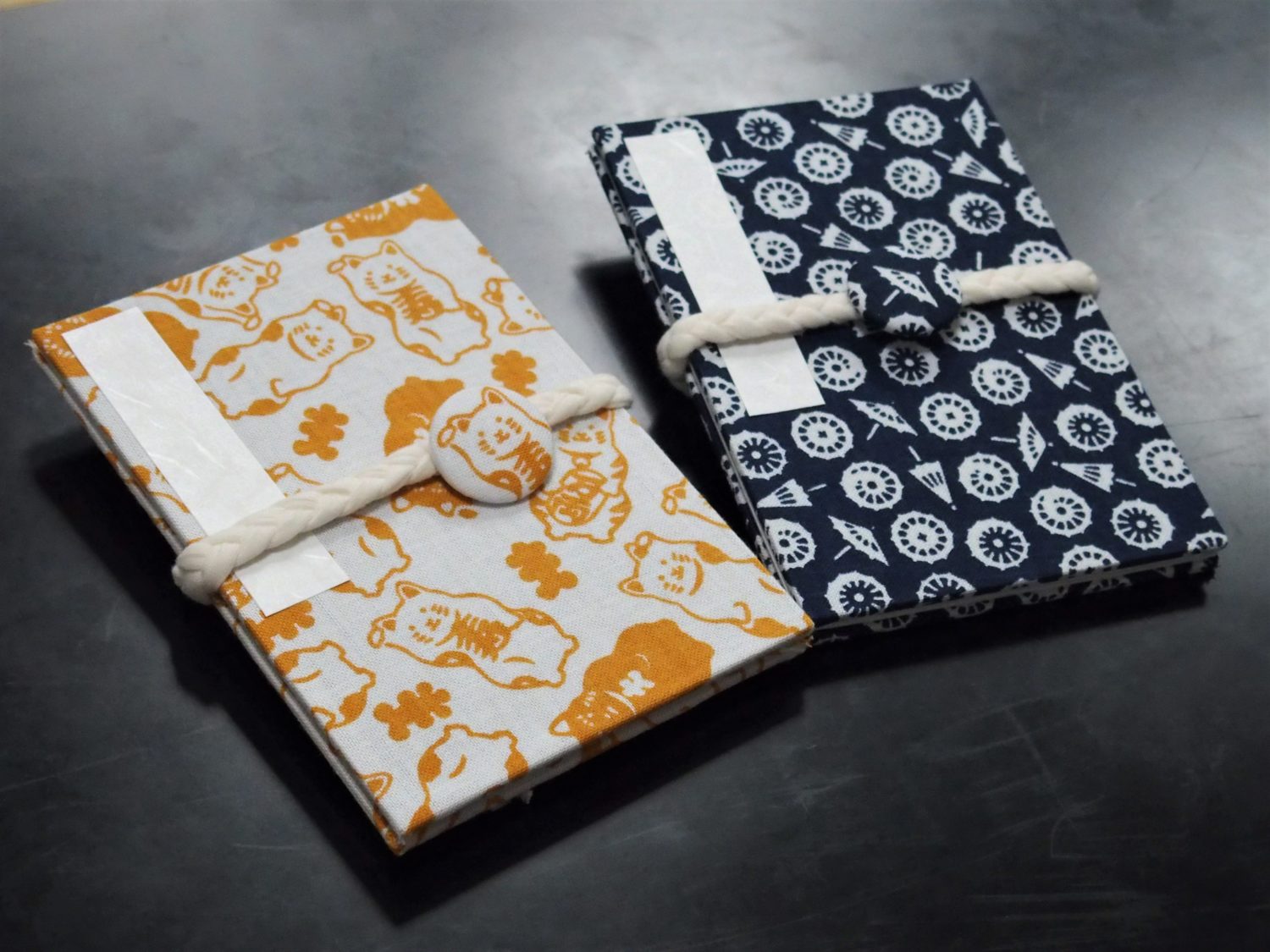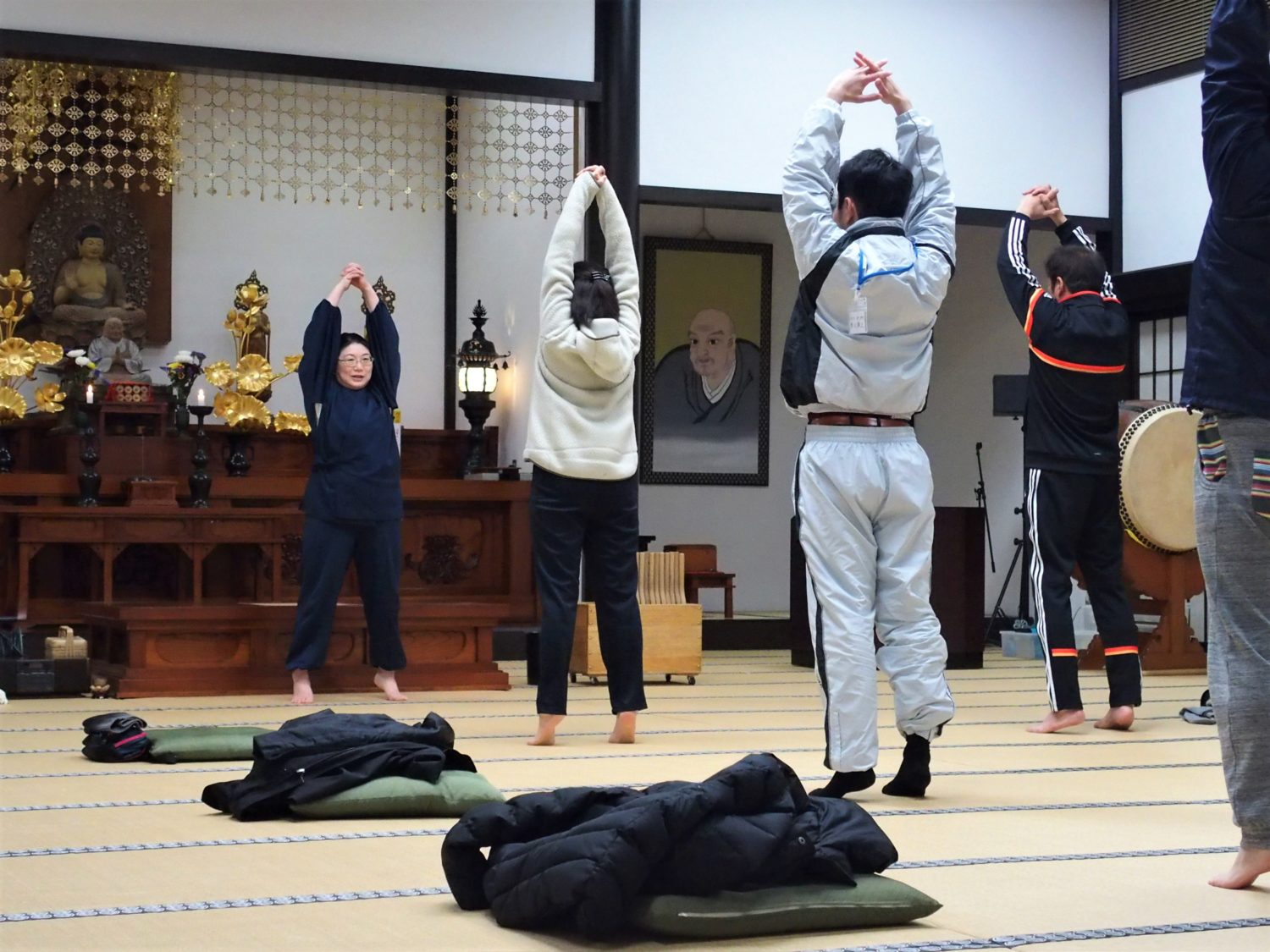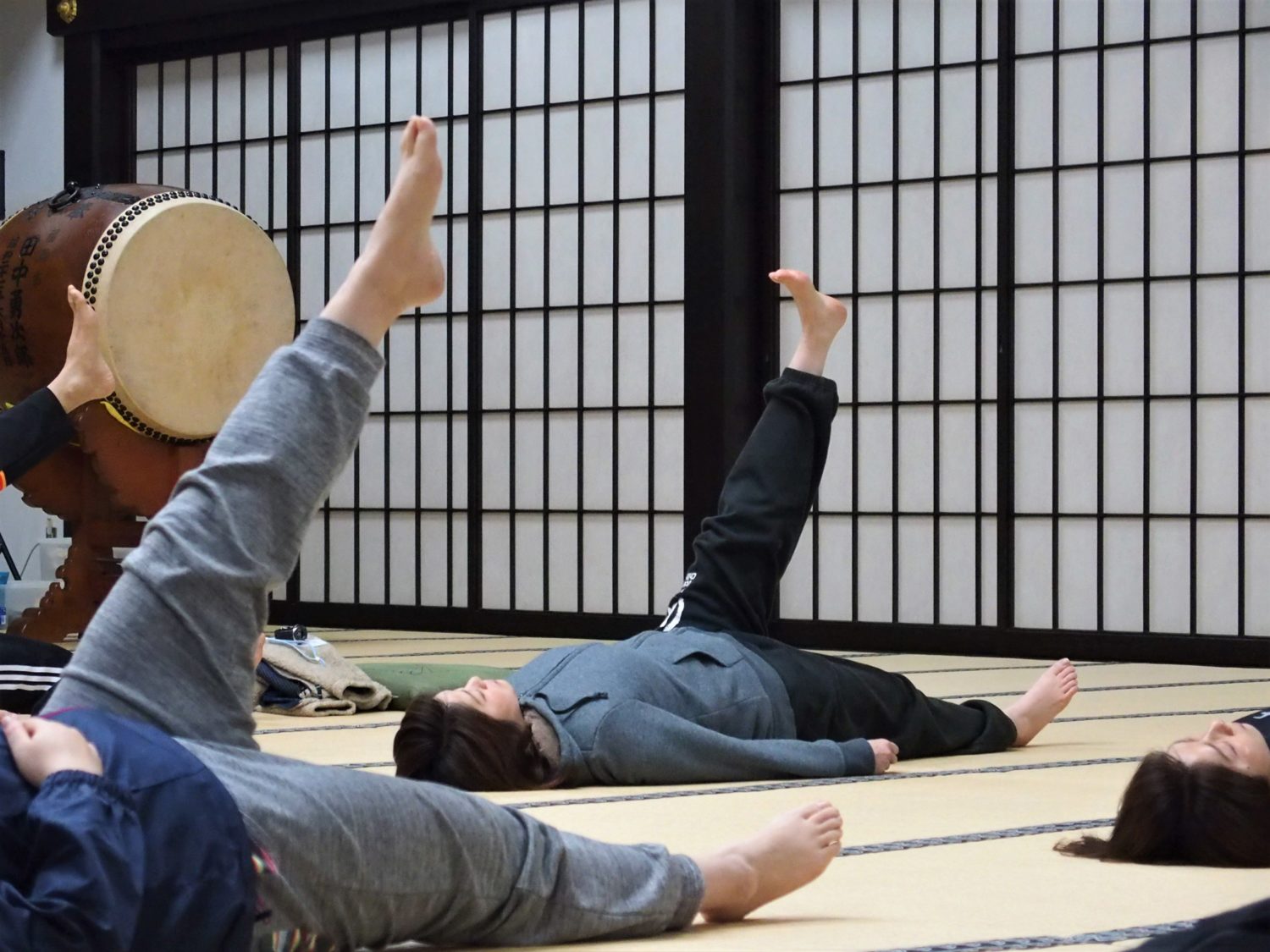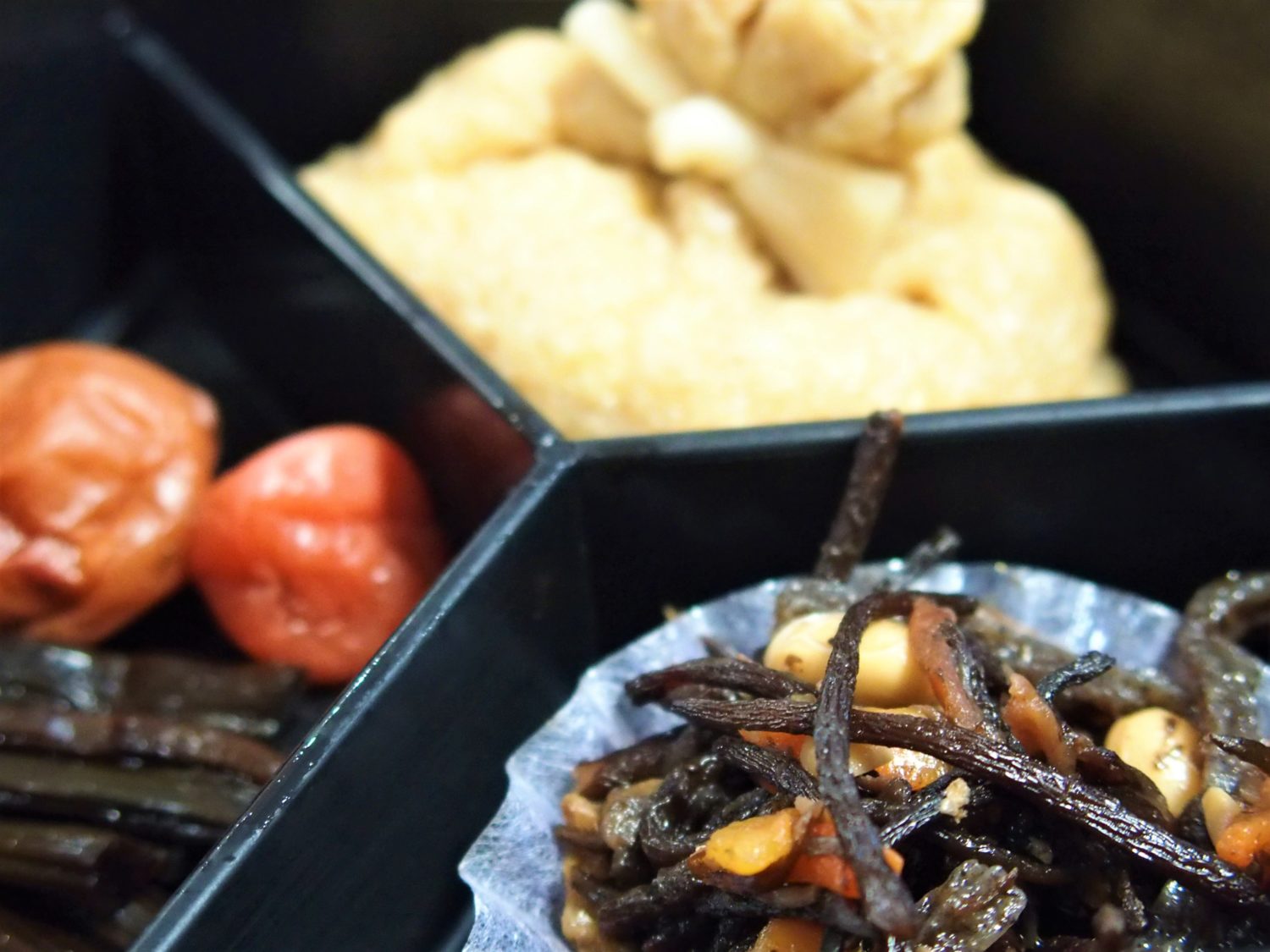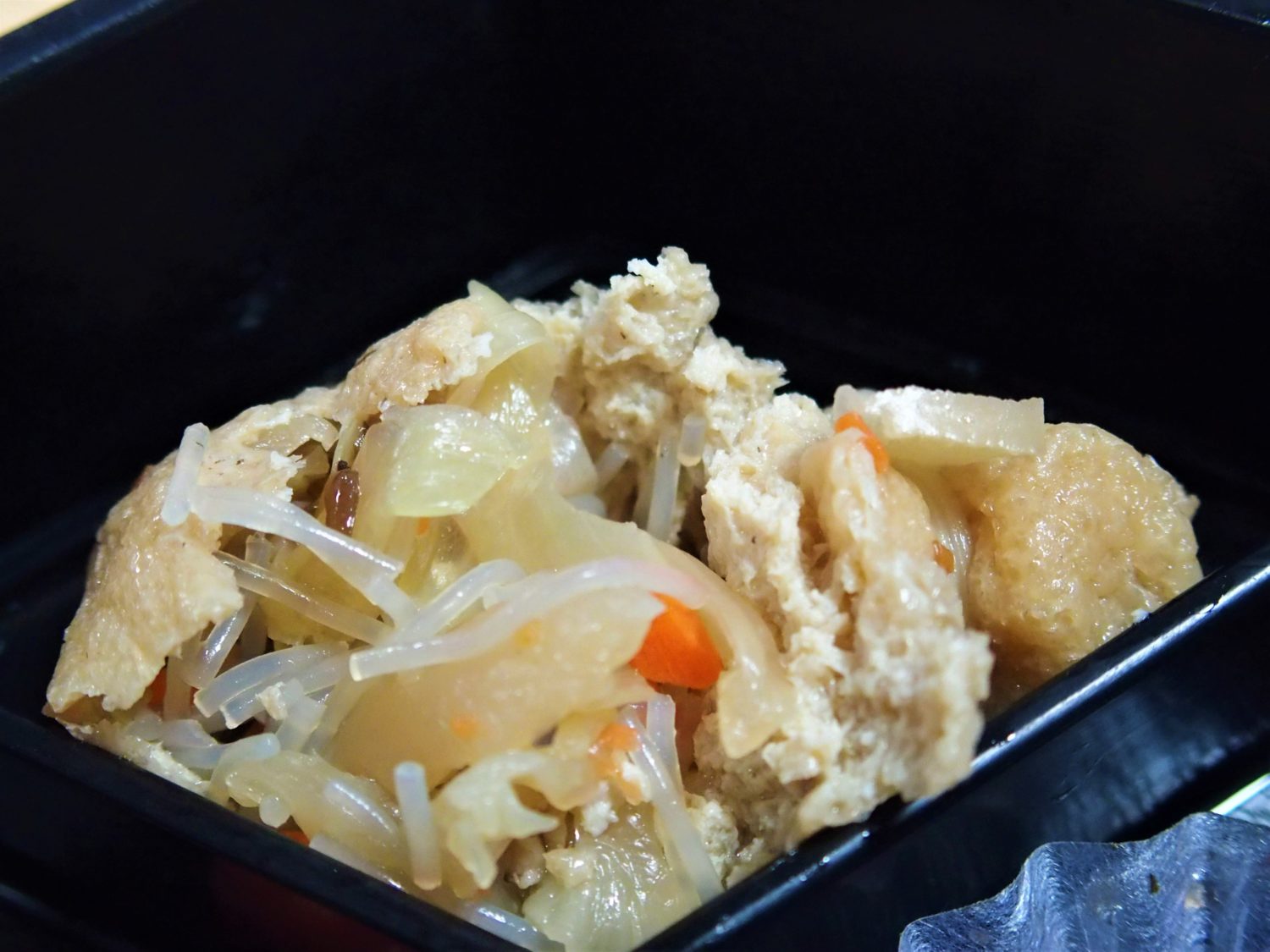Enjoying a relaxing time with yoga and meditation
It was 7 a.m., and time for some yoga and meditation. Why practice yoga at a temple? It’s been said that Buddha, or Siddhartha Gautama, achieved his enlightenment while practicing meditation, a form of yoga.
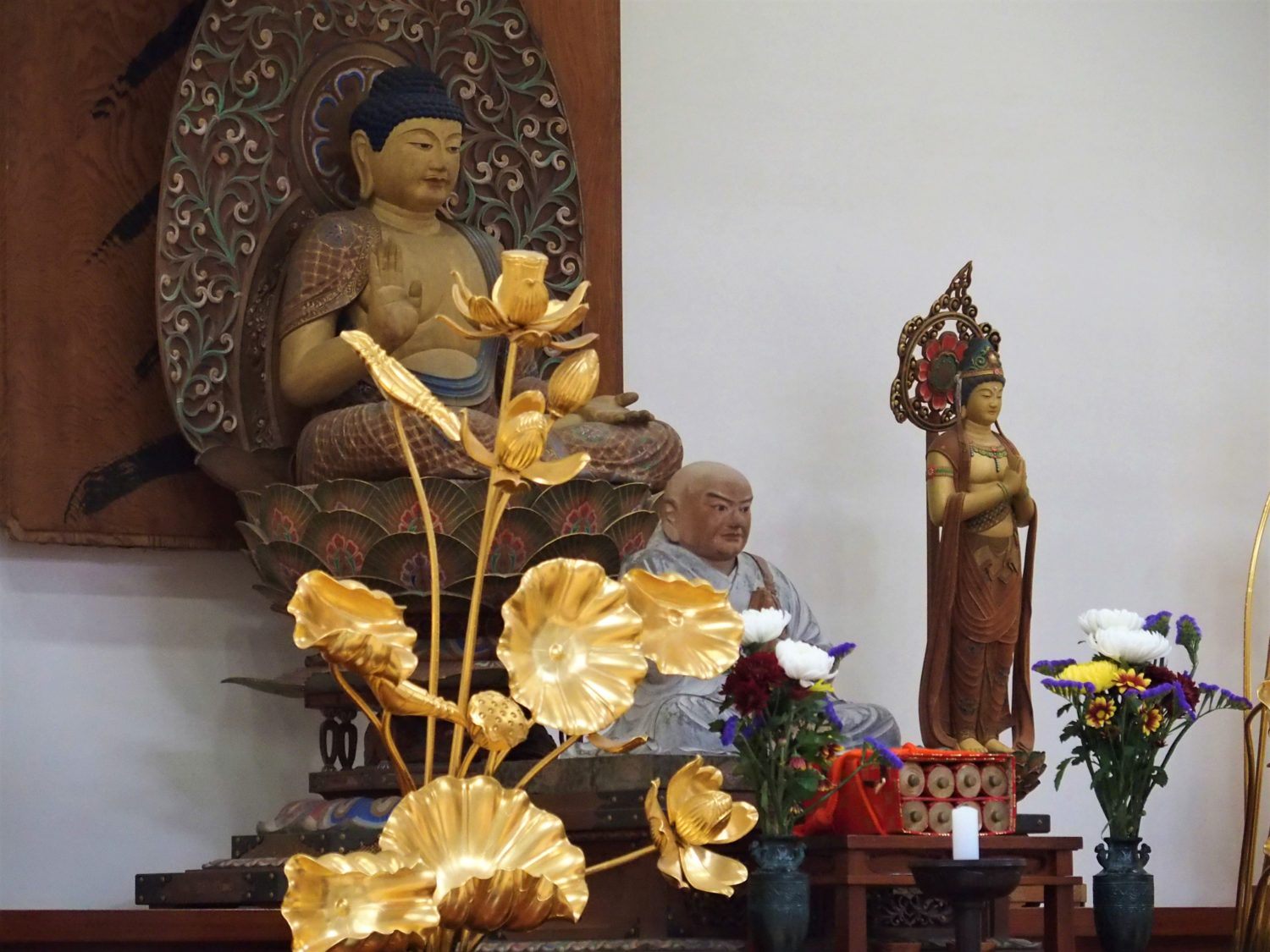
The class was taught by a female monk. At first, I found it a little difficult to move my body, as I had just come back from the outside. But, after a few poses, I started to notice my muscles starting to relax.
Then came the meditation time. First, our teacher showed us how to meditate properly — sit seiza-style, and place the left hand over the right, forming an oval shape just like an egg. Then, concentrate your mind on your “third eye,” located near the center of your brows.
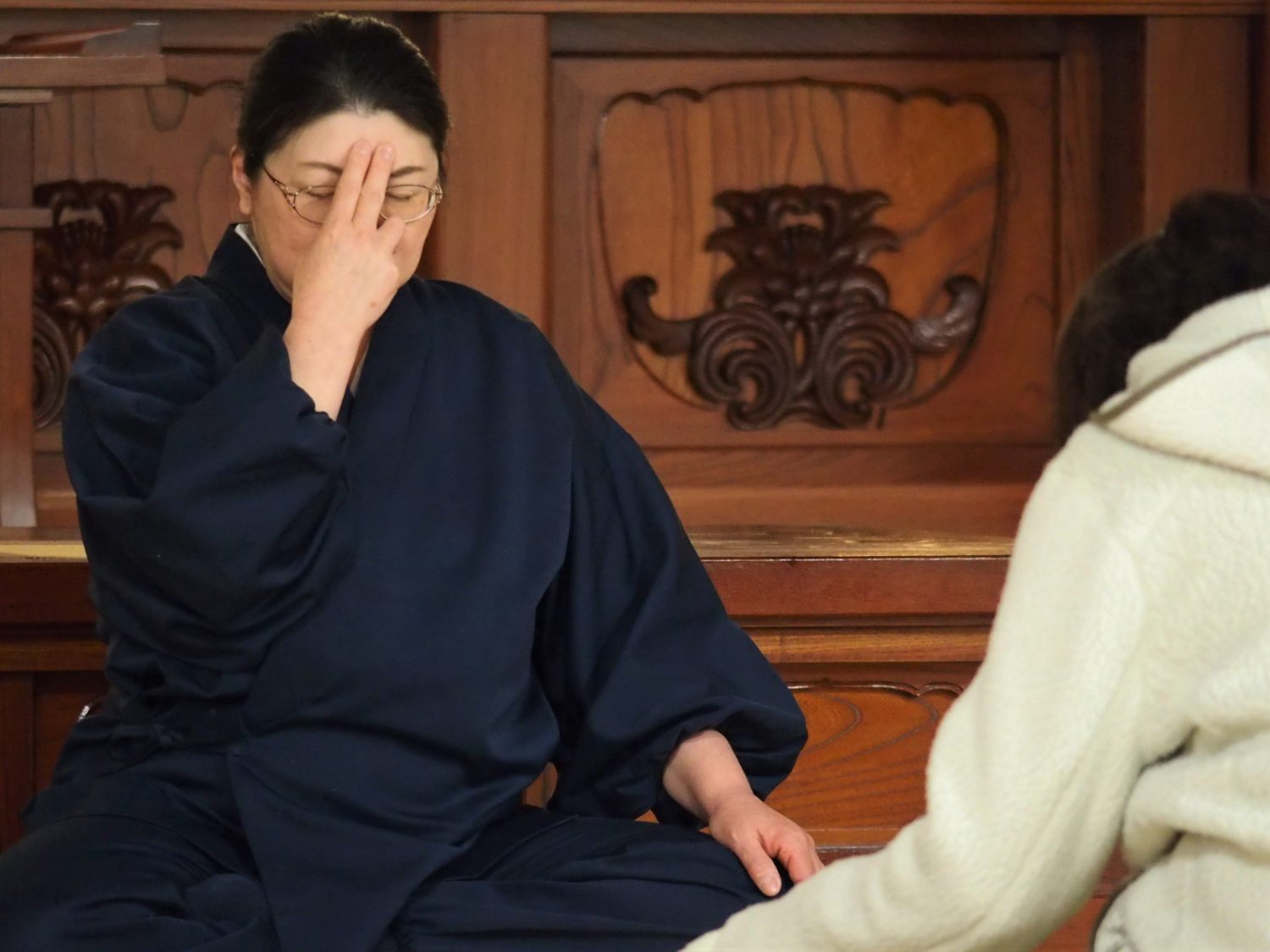
To be honest, I found it hard not to drowse off while meditating (after all, I did get up at 5 a.m.). But, after an hour and half practicing yoga and meditation, my body surprisingly felt awake and my mind clear and sharp.
Feeling refreshed with a simple breakfast
It was now time for breakfast. We walked to the temple’s cafeteria, where we had dinner last night.
We found “shojin ryori,” the traditional vegetarian cuisine eaten by Buddhist monks, set nicely on the table.
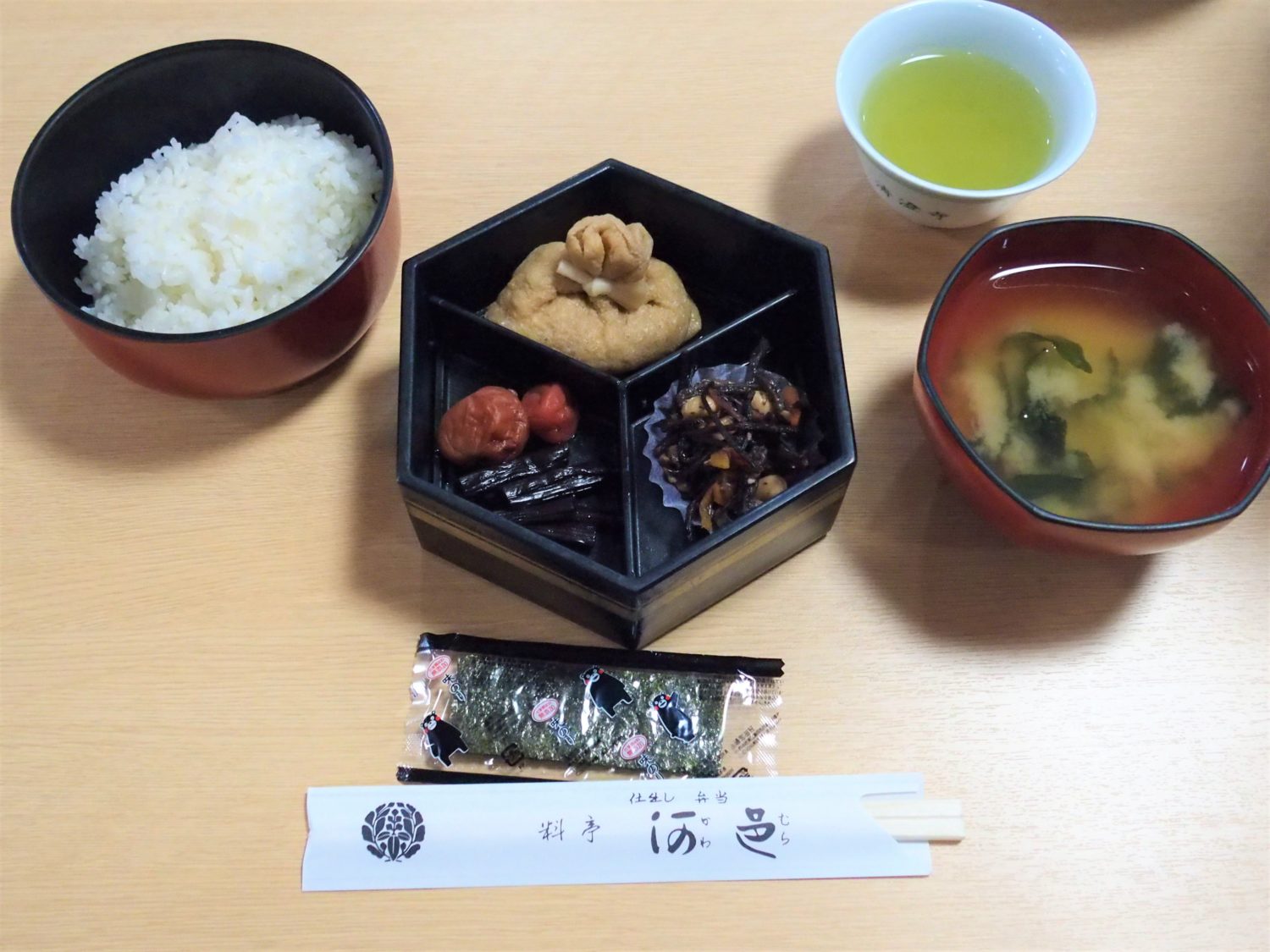
The rice was placed in a separate container, and each of us served ourselves — meaning, we could all have just the right amount of rice (and therefore no leftover).
Again, every dish was simple yet flavorful — perfect for replenishing your body.
Making your own personal “Goshuincho (book of seals)”
Next came a fun time of creating a “goshuincho” from scratch. I was actually looking forward to this activity the most!
Goshuincho is a book for collecting “goshuin,” or a seal that’s unique to each temple or shrine. Up until recently, the act of gathering goshuin used to be practiced only by the elder generation or those who’re devout; nowadays, however, it’s gotten popular among young people and tourists, as a way to keep track of and record where they’ve been.
First, we chose which fabric to use for the book cover. My boyfriend and I live with two cats, so the moment I saw the one with “maneki-neko (good luck cats),” that became my only option.
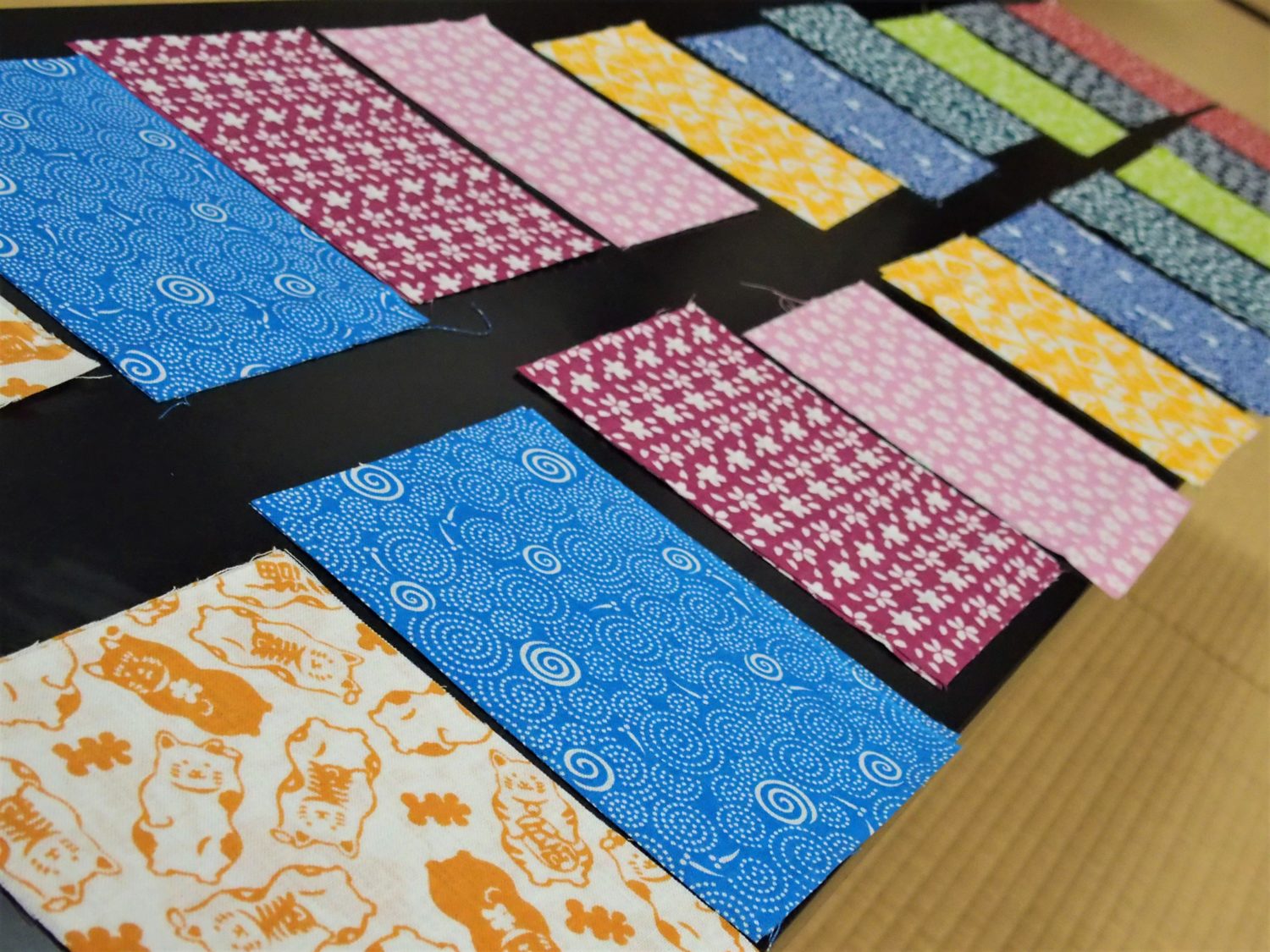
As soon as we had all the materials (e.g., some cardboard for front and back covers, a piece of string to tie around the notebook), we were ready to do some handicraft works.
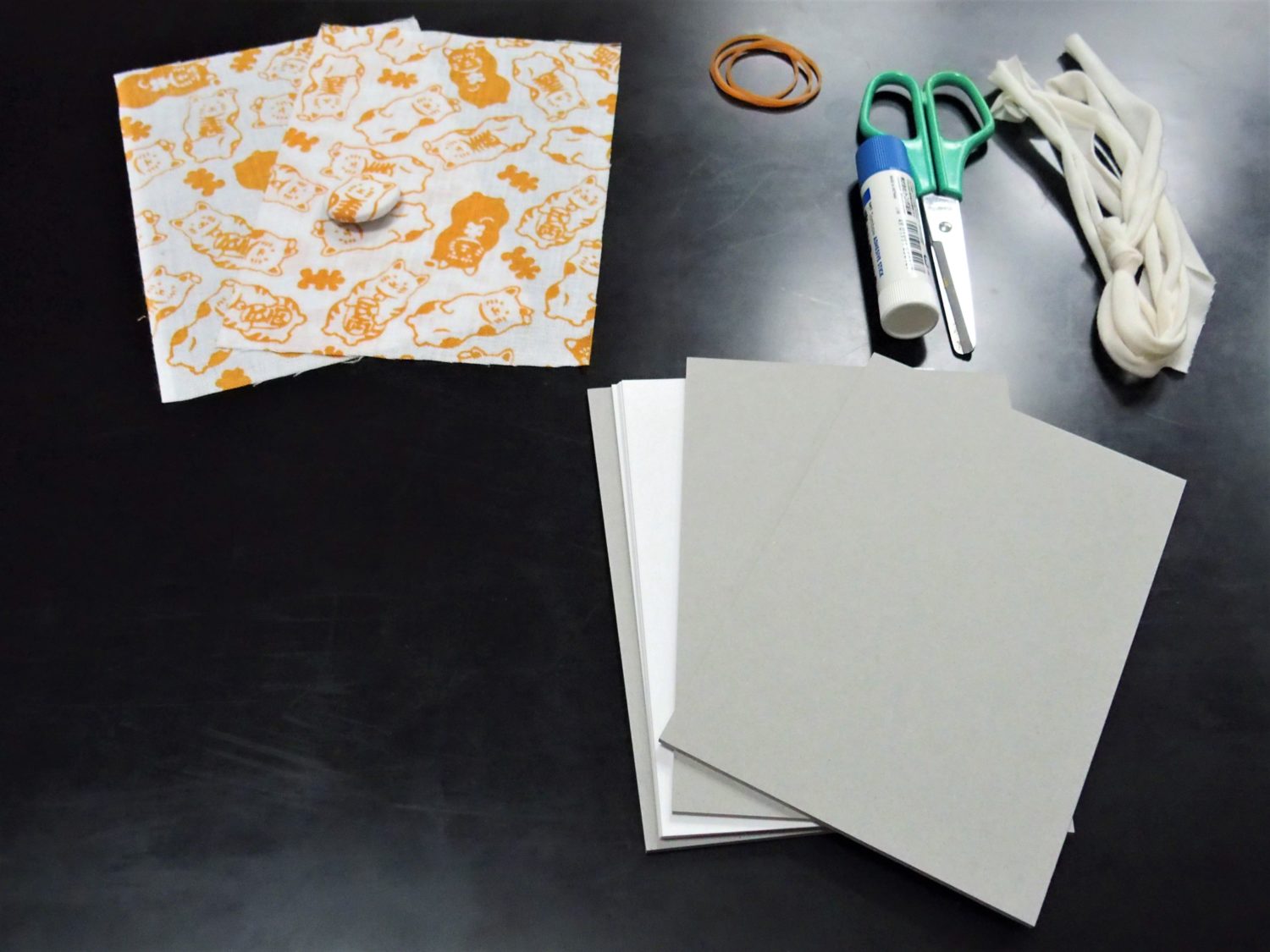
We started off by gluing fabric to cardboard, then arranging papers into an accordion-style book and braiding a string to make it look pretty. It was my first time doing this kind of hands-on activity in probably over 10 years, and I really enjoyed it! It allows you to use your brain differently, too.
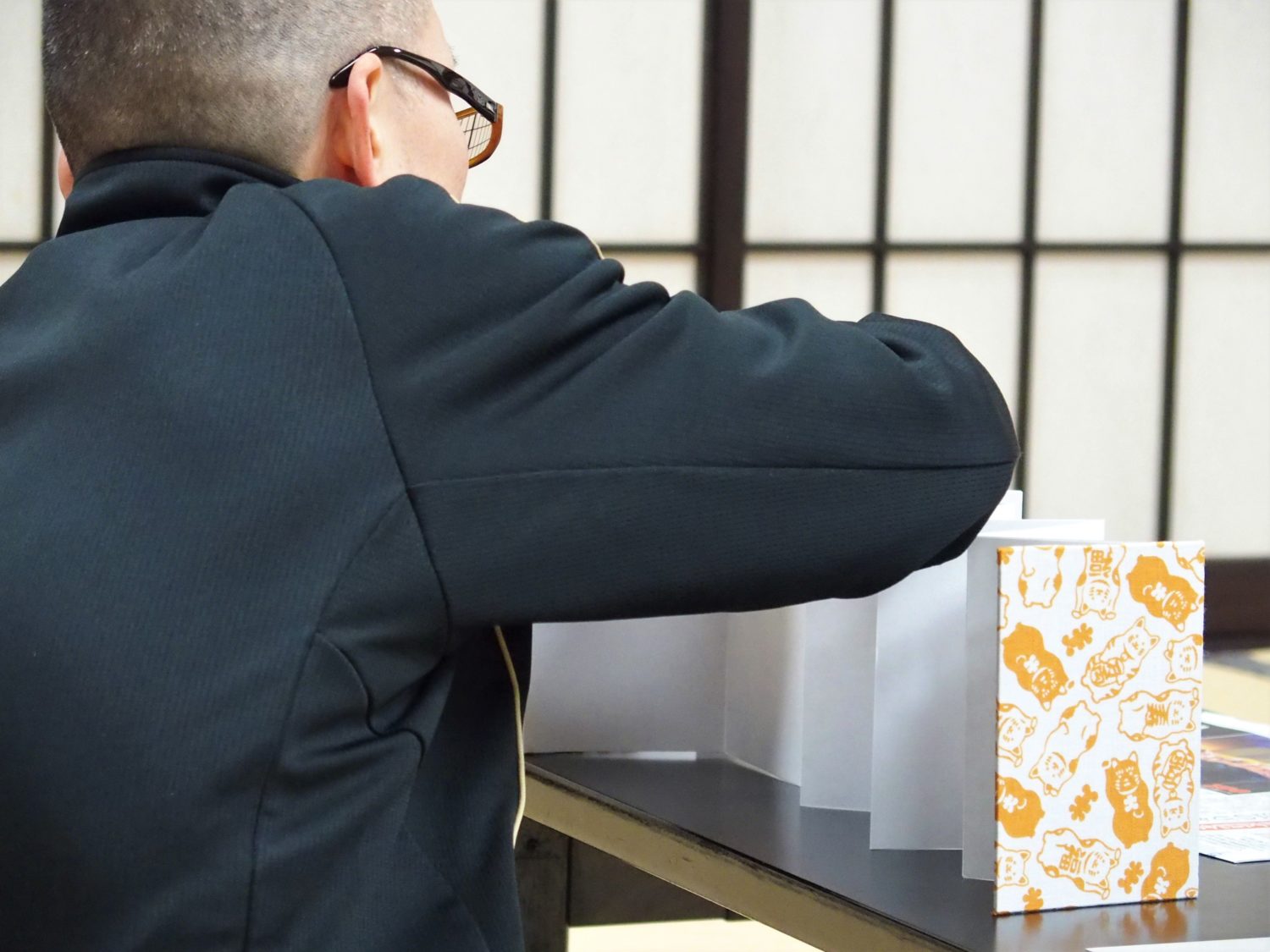
Here are the completed goshuincho books! Aren’t these buttons cute?
